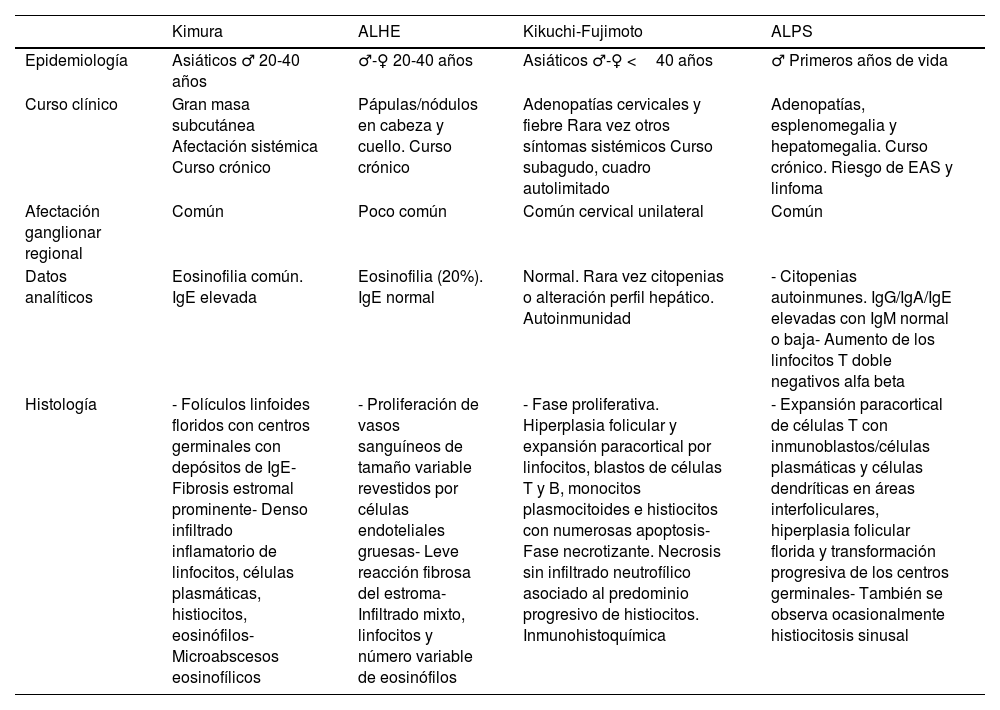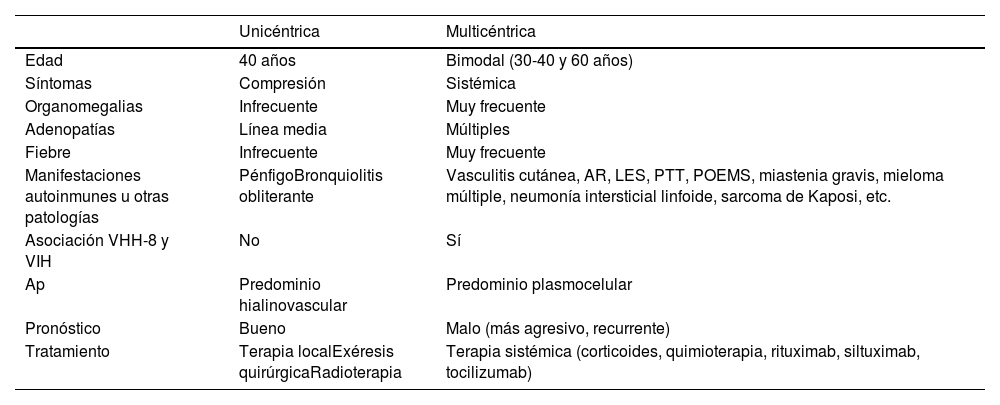La enfermedad de Castleman (EC) engloba a un conjunto heterogéneo de procesos linfoproliferativos que comparten rasgos histológicos bien definidos. Se considera una enfermedad rara o minoritaria u su incidencia no es del todo conocida, aunque se estima en menos de uno por cada 100.000 habitantes. Tiene una distribución bimodal (30-40 años y luego los 60-80 años). Su incidencia es similar en ambos sexos, aunque la variante unicéntrica parece tener ligero predominio en mujeres con proporción 2:1.
La EC se clasifica en una forma hialinovascular (siendo esta la más frecuente) y otra plasmocelular, relacionadas con el virus de la inmunodeficiencia humana (VIH) y el virus herpes humano tipo 8 (VHH-8), que junto a otros mecanismos autoinmunitarios desarrollan la hiperproducción de interleucina-6 (IL-6) por parte de los linfocitos B.
Existen diferentes líneas de tratamiento, donde destaca el uso de anti IL-6, siendo el siltuximab el más utilizado y catalogado como el fármaco huérfano de esta patología.
Castleman's disease (CD) encompasses a heterogeneous set of reactive lymphoproliferative processes that share well-defined histologic features.
CD is considered a rare or minority disease. The incidence of CD is not fully known, although it is estimated at less than 1 per 100,000 inhabitants. It has a bimodal distribution (30–40 years and then 60–80 years). The incidence is similar in both sexes, although the unicentric variant seems to have a slight predominance in women with a 2:1 ratio.
CD is classified into a hyalinovascular form (this being the most frequent) and a plasmocellular form, related to the HIV and VHH-8 viruses, which together with other autoimmune mechanisms develop hyperproduction of interleukin-6 (IL-6) by B lymphocytes.
There are different lines of treatment, where the use of anti IL-6 stands out, being siltuximab the most used as orphan drug in this pathology.












